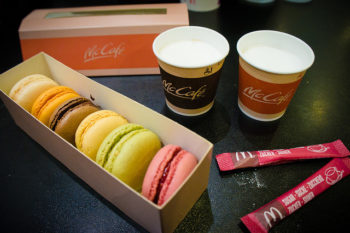
What’s going on, France? Are you really as hysterical about American fast food as the media wants to make us believe?
In 2018, Popeye’s Louisiana Kitchen and Carl’s Jr. opened their first restaurants in France. Since 2016, French people and tourists have been able to enjoy Five Guys’ largest restaurant in the world in Paris. Steak ‘n Shake opened its first location in France in May 2014, while Shake Shack is supposedly arriving in France pretty soon.
What makes France, the land of fine dining, so attractive for American fast-food chains?
The truth about the French
For the average French person, eating is synonymous with pleasure. They barely snack between breakfast, lunch, and dinner. Therefore, meals take more time, and more food is offered through multiple courses. Appetizer, entree, cheese, and/or dessert is the rule. But, does that mean that my countrymen don’t eat fast food? Not really.
In 2017, the French ate more than 1.46 billion burgers. According to a new survey by Gira Conseil, they also lead the European consumption with 18 burgers per year (for comparison, the Brits eat only 17 a year). As Forbes stated in this article, “Such amazing numbers are a body blow to the gastronomic superiority the country has always and proudly carried.”
France: a thriving fast-food market?
Well, yes and no.
According to the same survey, fast-food restaurants in France make more than half of the market share of all restaurants. However, this doesn’t mean that French people eat only burgers, pizzas, and fried chicken. Moreover, many French restaurants and cafés offer a “fast” menu, targeting professionals with shrinking break times.
On the other hand, hamburgers can be found on the menus of 85% of France’s restaurants. Of course with sophisticated variations and personal touches added by each chef. According to Gira Conseil, 70% of burgers are sold in traditional sit-down restaurants.
Born in the USA, made in France: The truth about the French McDonald’s
In 1999, farming activist José Bové and other members of a farmers’ union bulldozed a McDonald’s in the south of France. Protesting American tariffs on Roquefort cheese, Bové explained on TV, “We attacked this McDonald’s because it’s a symbol of big corporations who want to stuff us with bad food and ruin our farmers.” This was the first time he used the word “malbouffe,” which is used today to describe bad food or bad eating.
In 2004, McDonald’s was declared to be the symbol of “malbouffe.” Yet, McDonald’s has turned France into its second-most profitable market in the world, just after the United States. How is this possible?
Chances are, when eating in a McDonald’s in Germany, you’ll feel like you’re in the United States. That’s not the case in France.

When it opened its first European joint in 1999, McDonald’s choose Strasbourg, a big city at the French-German border. Leveraging its brand awareness in Germany, the chain copied and pasted the same decor and recipes for France. “For the first 15 years, we offered people a slice of America,” stated McDonald’s France CEO in a 2013 Wharton School of Business paper. That changed in 1995 when the chain integrated French cheese and other French food in their burgers. Today, McDonald’s France claims that 95% of its ingredients come from France.
McDonald’s also listened to its customers. What is key for a French customer? Enjoying the time to eat high-quality food in an attractive place.
The French subsidiary invested heavily in renovating their stores and launched the McCafé, whose pastries compete easily with local bakeries. NPR pointed out in 2012 that French McDonald’s locations don’t feel like fast-food: “[they] are spacious, tastefully decorated restaurants that encourage people to take their time while eating. The cozy McCafe’s with their plush chairs and sofas have become an extension [of] many restaurants.”
When I read this article in Le Monde a couple of days ago, I was stunned to learn how successful the American fast-food giant is in rural France. In 1960, France had 200,000 cafés. Today only 32,000 are left and teenagers go to McDonald’s instead: They will meet there after school, waiting for the bus to take them home. Elsewhere, it’s the only place where you can get something to drink or have a bite to eat with friends.
Why are more and more American fast-food chains coming to France?
Paul Fedele, editor in chief of snacking.fr, stated last year that France’s food culture is still very challenging but offers companies many opportunities to learn and renew their products/menus.
After French and other European companies successfully launched high-end burgers made with fresh and/or organic ingredients, American fast-food chains felt encouraged to open stores in France: “If they could succeed in France, why not try in other countries?”
France is a lucrative market for American fast-food chains. Even if they don’t have much time for lunch, the French like to eat well and spend more on food than Germans and Americans.
Eventually, Popeye’s and Co. may have learned from Burger King’s failure (they withdraw from the French market in 1997) and McDonald’s success. For example, KFC offers not only fried chicken but also the well-loved “poulet roti” (roast chicken).
Is it enough? I don’t know. Let just wait and see if France is the new paradise of American fast-food chains.







